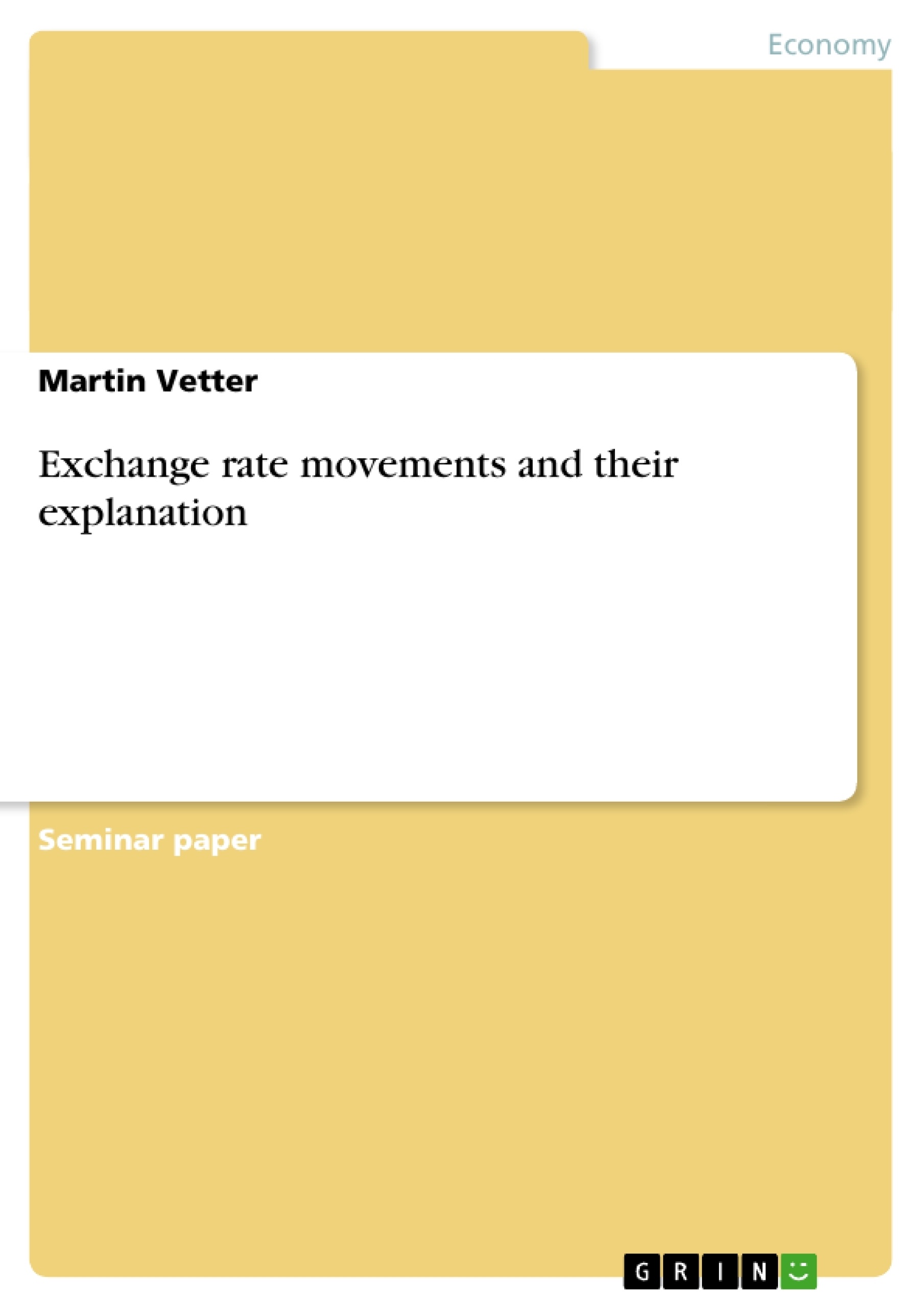The essay addresses the topic of exchange rate movements and their explanation. Four different theoretical approaches are therefore taken into consideration, namely the Monetary Fundamentals approach, the Macroeconomic Balance approach, the Dispersed Information or Microstructure approach and the approach of explaining exchange rate movements by dealers. The essay outlines each approach and its assumptions briefly and evaluates the underlying time horizon, short-, medium- or long-term horizon, of each model. Furthermore the four approaches of exchange rate analysis are put into contrast. Finally all approaches are evaluated in spite of their individual strengths and weaknesses and linked to each other.
Inhaltsverzeichnis (Table of Contents)
- Synopsis
- Introduction
- Outline of different approaches to explain exchange rate movements
- Monetary Fundamentals Approach
- The Macroeconomic Balance Approach
- Dispersed Information or Microstructure Approach
- Explanation of exchange rate movements by dealers
- Time horizons of the different approaches
- Evaluation and contrasting of the different approaches
- Conclusion
- References
Zielsetzung und Themenschwerpunkte (Objectives and Key Themes)
This essay aims to provide a comprehensive analysis of exchange rate movements and their underlying explanations. It explores four distinct theoretical approaches, encompassing monetary fundamentals, macroeconomic balance, dispersed information, and dealer behavior. The essay evaluates the time horizons, strengths, and weaknesses of each approach, and contrasts them to gain a holistic understanding of exchange rate dynamics.
- Monetary Fundamentals Approach and its implications for exchange rate determination.
- Macroeconomic Balance Approach and its focus on internal and external equilibrium.
- Dispersed Information or Microstructure Approach and its emphasis on information aggregation and market participant behavior.
- Explanation of exchange rate movements by dealers and its focus on practitioner behavior and intra-daily exchange rate dynamics.
- Comparison and contrasting of the different approaches, highlighting their individual strengths and limitations.
Zusammenfassung der Kapitel (Chapter Summaries)
The synopsis provides a brief overview of the essay's scope and methodology, outlining the four theoretical approaches to be examined. The introduction delves into the significance of exchange rate movements in a globalized world, particularly in the context of the transition from fixed to floating exchange rates. It sets the stage for the essay's objective of outlining and contrasting these four approaches.
The chapter "Outline of different approaches to explain exchange rate movements" presents a detailed explanation of each approach. This includes the Monetary Fundamentals Approach, based on flexible prices and relative purchasing power parity; the Macroeconomic Balance Approach, which emphasizes internal and external equilibrium; the Dispersed Information or Microstructure Approach, focusing on information aggregation and market participant behavior; and the approach of explaining exchange rate movements by dealers, which emphasizes practitioner behavior and intra-daily exchange rate dynamics.
The "Time horizons of the different approaches" chapter examines the specific time horizon each approach considers. The "Evaluation and contrasting of the different approaches" chapter critically analyzes each approach's strengths and weaknesses, comparing and contrasting their individual characteristics.
Schlüsselwörter (Keywords)
The main keywords and focus topics of this essay include exchange rate movements, monetary fundamentals, macroeconomic balance, dispersed information, microstructure, dealer behavior, time horizons, evaluation, and contrasting. The essay explores different theoretical approaches to understanding exchange rate dynamics, considering their individual strengths and limitations in relation to the globalized financial landscape.
- Quote paper
- Martin Vetter (Author), 2004, Exchange rate movements and their explanation, Munich, GRIN Verlag, https://www.grin.com/document/84795



